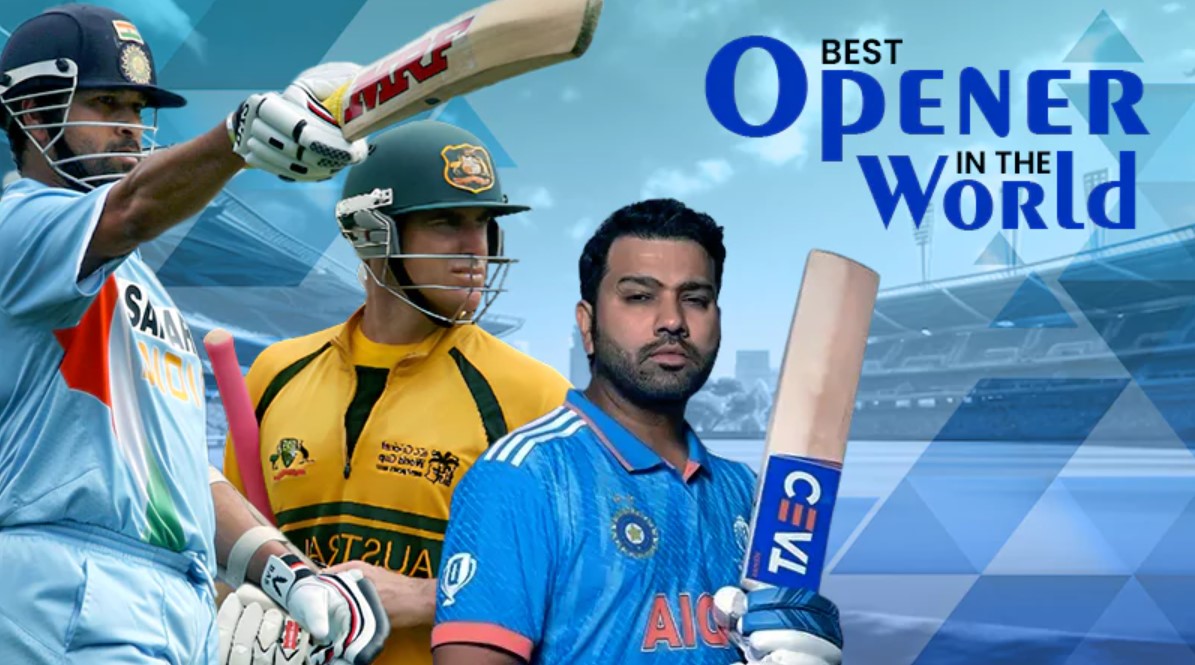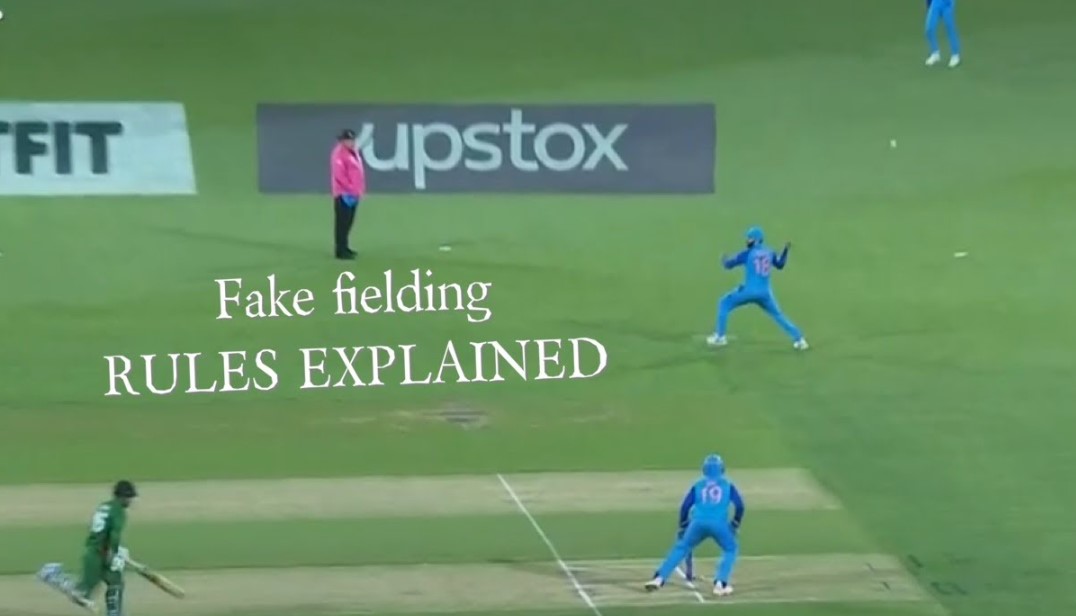What is DLS Method in Cricket
Ever sat through a cricket matches and felt the frustration when rain interrupted the play? What if there was a method to ensure fairness when natural interruptions occur? Enter the DLS method. But what is the DLS method in cricket?

DLS in the Cricket World Cup
The DLS (Duckworth-Lewis-Stern) method, or simply the DLS method, is a mathematical formula that’s used to adjust target scores in limited-overs cricket matches when the game is affected by rain or other interruptions. In the Cricket World Cup, where the stakes are incredibly high, having a fair and effective method to deal with rain interruptions is vital.
The DLS method was introduced to address the challenges of rain-affected matches, ensuring that the outcome is as fair as possible. It takes into account various factors, including the number of overs bowled, the number of wickets lost, and the scoring patterns in the innings before the interruption. By considering these variables, the DLS method recalculates the target score for the team batting second, reflecting the revised conditions of the match.
One of the key aspects of the DLS method is its ability to adjust targets dynamically, reflecting the evolving circumstances of the game. This means that as the match progresses and more overs are lost to rain, the target score for the team batting second is adjusted accordingly. This ensures that both teams have a fair opportunity to compete, and the outcome is determined by cricketing skill rather than the vagaries of the weather.
In the context of the Cricket World Cup, where every match is crucial and the margin between victory and defeat can be razor-thin, the DLS method plays a critical role in maintaining the integrity of the competition. It prevents situations where a team could potentially be unfairly disadvantaged due to rain interruptions, and it ensures that the competition remains exciting and balanced.
Ultimately, the DLS method is a testament to the adaptability and innovation within the sport of cricket. It’s a tool that helps preserve the essence of competition in the face of unpredictable weather conditions, allowing fans around the world to enjoy thrilling matches and witness the crowning of a deserving champion in the Cricket World Cup.

The Origin of the DLS Method
Cricket, with its centuries-old history, has evolved into a global sport with diverse formats and rules. Its origins in 16th century England have given rise to a game that now encompasses Test matches, One Day Internationals (ODIs), Twenty20 cricket, and more. This evolution has led to the need for standardized rules and methods to address various game scenarios.
Rain and adverse weather conditions have always been a challenge in cricket, especially in regions like the British Isles where the sport originated. Historically, there were rudimentary ways to adjust targets when rain disrupted play, but these methods lacked precision and consistency.
In the late 1990s, two statisticians, Frank Duckworth and Tony Lewis, recognized the shortcomings of the existing systems and embarked on a mission to create a more scientific and equitable method for rain-affected matches. Their innovative approach not only accounted for the overs lost but also considered the number of wickets in hand, providing a more comprehensive assessment of a team’s position in the match.
As the method underwent further refinements, Steven Stern made significant contributions, leading to the development of the Duckworth-Lewis-Stern (DLS) method. This method, widely accepted and used in international cricket today, has revolutionized the way target scores are adjusted in rain-affected matches. It has brought a higher level of fairness and accuracy to the game, ensuring that teams have a more equitable opportunity to compete, regardless of the weather conditions.
The DLS method, rooted in the sport’s rich history and driven by a commitment to fairness and precision, stands as a testament to the sport’s ability to adapt and evolve while preserving its core values and traditions. It ensures that cricket remains a game of skill, strategy, and sportsmanship, even in the face of unpredictable weather.

Why is the DLS Method Necessary?
Cricket is a sport uniquely susceptible to the influence of weather, particularly rain. Unlike many other sports, where weather conditions might be a minor inconvenience, rain in cricket can have a profound impact on the game’s outcome. It can disrupt the rhythm of a batting side, make the pitch conditions unpredictable, and create an uneven playing field.
The DLS method is a necessary tool in the world of cricket because it serves as a crucial equalizer in the face of unpredictable weather. It ensures that teams are not unfairly advantaged or disadvantaged due to rain interruptions. Without such a method, rain could potentially decide the outcome of a match, undermining the skill, strategy, and effort invested by both teams.
The method’s importance is further highlighted in high-stakes tournaments like the Cricket World Cup, where every match holds immense significance. In such prestigious competitions, the integrity of the game must be preserved, and the DLS method accomplishes this by recalibrating target scores to account for the lost overs and wickets.
Ultimately, the DLS method is a safeguard against the capricious nature of weather, allowing cricket matches to proceed with fairness and integrity. It ensures that the essence of competition is maintained, irrespective of rain clouds looming overhead, and that the outcome is determined by the teams’ abilities rather than the weather conditions.
The Basics of the DLS Method
The DLS method, short for Duckworth-Lewis-Stern method, is a highly sophisticated and dynamic system used to adjust target scores in rain-affected cricket matches. While its fundamental principle appears straightforward, the method involves intricate calculations that go beyond a simple pro-rata reduction based on overs lost and wickets fallen.
At its core, the DLS method assesses the potential scoring capabilities of a team by taking into account the number of overs remaining and the number of wickets lost. However, what sets it apart is its ability to recognize that teams possess varying resources at different stages of their innings. This acknowledgment of the dynamic nature of cricket is essential in ensuring fair play and a balanced competition, even when weather interruptions threaten to disrupt the game’s flow.

Factors Considered by the DLS
These factors are crucial in ensuring that the method provides a fair reflection of the match’s dynamics and the team’s resources. Let’s delve further into these factors:
Number of Overs: The number of overs remaining in a match plays a pivotal role in shaping a team’s approach to their innings. When a team has fewer overs due to rain interruptions, they often need to adopt a more aggressive stance, aiming to score quickly to make the most of the limited time. Conversely, more overs allow teams to plan their innings differently, focusing on building partnerships and pacing their scoring.
Wickets Lost: The loss of wickets significantly impacts a team’s ability to control and accelerate their innings. Losing key batsmen can limit a team’s resources and influence the outcome of the match. If a team has lost several wickets, they might need to be more cautious, while having wickets in hand allows them to take calculated risks and aim for a higher score.
Historical Match Data: The DLS method is not static; it constantly evolves by analyzing extensive historical match data. This data-driven approach enables the method to refine its calculations and become more accurate over time. By studying patterns from past games, the DLS method gains insights into how teams typically perform under various conditions and disruptions, making its adjustments more precise.
Stage of the Match: Where an interruption occurs during a match is a critical consideration. An interruption at the beginning of an innings is treated differently from one that happens towards the end. This is because the strategies and potential outcomes of a match vary significantly based on the phase it’s in. For instance, an interruption early in the innings might allow a team to recover and set a competitive total, while a late interruption might limit their ability to post a challenging score.
These factors collectively contribute to the complexity and accuracy of the DLS method. By taking into account the evolving conditions, team resources, and historical performance data, the method aims to provide a fair and balanced target score that preserves the integrity of the game, even in the face of weather-related disruptions.
The DLS in Action: A Simple Example
Imagine Team A has scored 250 in 50 overs. Rain interrupts, and Team B now has only 40 overs to bat. Instead of a straightforward calculation that might have them chasing a reduced total like 200, the DLS might set a more nuanced target of 230, considering the reduced overs, potential lost opportunities, and the state of the game before the interruption.

DLS in Major Tournaments
The DLS method has become synonymous with high-stake tournaments where every match matters and disruptions could significantly influence outcomes.
- Cricket World Cup: As the pinnacle of ODI cricket, the World Cup sees teams from around the globe competing fiercely for the ultimate glory. Given the event’s magnitude, ensuring fairness in rain-affected matches is paramount. The 2019 World Cup semi-final between India and New Zealand is a prime example where the DLS method came into play, determining the fate of a match that spanned across two days due to rain.
- ICC T20 World Cup: This explosive format sees matches often hanging in the balance, where every over, or even a ball, can change the game’s course. Given the brevity of T20 matches, rain interruptions can be game-changers. Using the DLS method ensures a semblance of fairness, even in such volatile conditions.
- Champions Trophy: Another major ODI tournament organized by the ICC has had its fair share of rain-affected matches. In tournaments like these, which often take place in regions with unpredictable weather, such as England, the DLS method is invaluable.
- Indian Premier League (IPL): Being one of the most popular T20 leagues globally, the IPL often witnesses matches with high stakes and tight finishes. The DLS method’s incorporation ensures that even when nature intervenes, the competition’s integrity remains intact.
- Other Leagues: From the Big Bash League in Australia to the Caribbean Premier League in the West Indies, various T20 leagues globally have embraced the DLS method to deal with weather interruptions.
In all these tournaments, the importance of DLS isn’t just in its mathematical rigor but also in the transparency and predictability it offers. Teams, broadcasters, and fans alike have a system they can understand and trust, ensuring that even when rain clouds gather, the spirit of cricket shines through.
Pros and Cons DLS in cricket
The Duckworth-Lewis-Stern (DLS) method, introduced to address the impact of rain interruptions on cricket matches, has been both a blessing and a source of controversy in the cricketing world. Like any system, it comes with its own set of advantages and disadvantages. Let’s delve into the pros and cons of the DLS method in cricket to gain a comprehensive understanding of its impact on the game.
| Pros | Cons |
|---|---|
| 1. Objective Decision: DLS provides an objective method to calculate target scores in rain-affected matches, reducing disputes. | 1. Complex Formulas: The calculations involve complex mathematical formulas that can be challenging for non-experts to understand. |
| 2. Match Continuity: It allows for match continuity, preventing unnecessary delays or rescheduling. | 2. Subject to Criticism: DLS has faced criticism, particularly when it leads to unexpected outcomes or perceived unfairness. |
| 3. International Standard: DLS is recognized as the international standard for rain-affected matches. | 3. Limited Applicability: It is mainly applicable to limited-overs matches, limiting its use in Test cricket. |
| 4. Dynamic Adjustment: The method continuously adjusts the target based on the evolving match situation. | 4. Impact on Strategies: Teams may adopt different strategies, such as batting aggressively to stay ahead of DLS targets, affecting the natural flow of the game. |
| 5. Preserves Spectator Interest: DLS helps maintain spectator interest in rain-interrupted matches. | 5. Technology Reliance: DLS heavily relies on technology, and technical issues can disrupt its application. |
Conclusion
In conclusion, the Duckworth-Lewis-Stern (DLS) method has undeniably revolutionized the way cricket handles rain interruptions, ensuring a fairer outcome in rain-affected matches. However, it’s not without its flaws and criticisms. While it has brought more accuracy and objectivity to adjusting targets, there remain concerns about its complexity and the potential for misinterpretation.
On the positive side, the DLS method has allowed for more consistency in handling rain-affected matches across different formats and levels of cricket. It considers various factors such as the number of overs left, wickets in hand, and historical data, providing a more nuanced target for the chasing team. This has undoubtedly reduced the element of luck in such situations.

Nevertheless, the method’s intricacy and reliance on historical data have led to instances where it has been seen as unfair or counterintuitive. The need for constant updates and recalibrations to adapt to evolving batting strategies and conditions has raised questions about its long-term viability.
Ultimately, the DLS method serves as a valuable tool in maintaining the integrity of cricket matches amidst unpredictable weather conditions. It’s a testament to the sport’s commitment to fairness and competition. However, it remains a subject of ongoing scrutiny and debate, with the quest for a perfect rain rule in cricket still continuing.
FAQ
What is the DLS method in cricket?
The DLS method derives its name from its three inventors: Frank Duckworth, Tony Lewis, and Steven Stern. Initially, it was just the Duckworth-Lewis method, but when Steven Stern refined and furthered their work, his contribution was acknowledged, leading to the naming as Duckworth-Lewis-Stern or DLS.
Does DLS apply to all cricket formats?
The DLS method is primarily used in ODIs (One Day Internationals) and T20s, where matches are of limited overs, and weather interruptions can change the course of the game. Test matches, on the other hand, are played over five days, giving ample time to make up for lost play, making the DLS method less relevant in that format.
Has the DLS method ever been updated?
Yes, the method has witnessed refinements and updates over the years. While Duckworth and Lewis laid the groundwork, Steven Stern later made modifications, adding more sophistication and taking into account newer patterns and data from cricket matches, leading to a more contemporary version of the DLS.
Why do some critics oppose the DLS?
Critics often point out that the DLS method might not always encapsulate the real dynamics and unpredictability of a cricket match, especially in the fast-paced T20 format. There are situations where they believe the revised targets might not reflect a team’s true potential or the actual state of the match before an interruption.
Are there alternatives to DLS in modern cricket?
Over the years, several methods have been proposed as alternatives to DLS. Methods like the VJD system, named after its creator V. Jayadevan, have been discussed. However, the DLS remains the most globally accepted and widely used system due to its mathematical robustness and the international cricket community’s confidence in its fairness.
How is the DLS target communicated to the teams and spectators during a match?
The DLS target is typically communicated to both teams and spectators through electronic scoreboards, digital screens, and live broadcasts. It’s essential for everyone involved to be aware of the adjusted target, ensuring clarity and fairness in the game.
Can the DLS method be applied retroactively to past cricket matches with rain interruptions?
No, the DLS method cannot be applied retroactively to past matches. It is designed for use in ongoing or future matches to account for rain interruptions as they happen. Once a match has concluded, its result stands, and the DLS method cannot be used to change the outcome.
Does the DLS method have any impact on a player’s statistics, such as centuries or five-wicket hauls?
The DLS method does not directly impact individual player statistics like centuries (100 runs in an innings) or five-wicket hauls (taking five or more wickets in an innings). These statistics are typically based on a player’s performance within the originally scheduled number of overs in a match. However, the adjusted targets provided by DLS can influence a team’s strategy and a player’s approach to achieving these milestones.
Can teams manipulate their approach to take advantage of the DLS method?
Teams can adjust their approach to adapt to the DLS target, just as they would adapt to any target in a cricket match. However, manipulating or intentionally underperforming to exploit the DLS method is against the spirit of fair play in cricket and can lead to ethical and sportsmanship concerns. Cricket authorities closely monitor such behavior and take appropriate action if deemed necessary.







